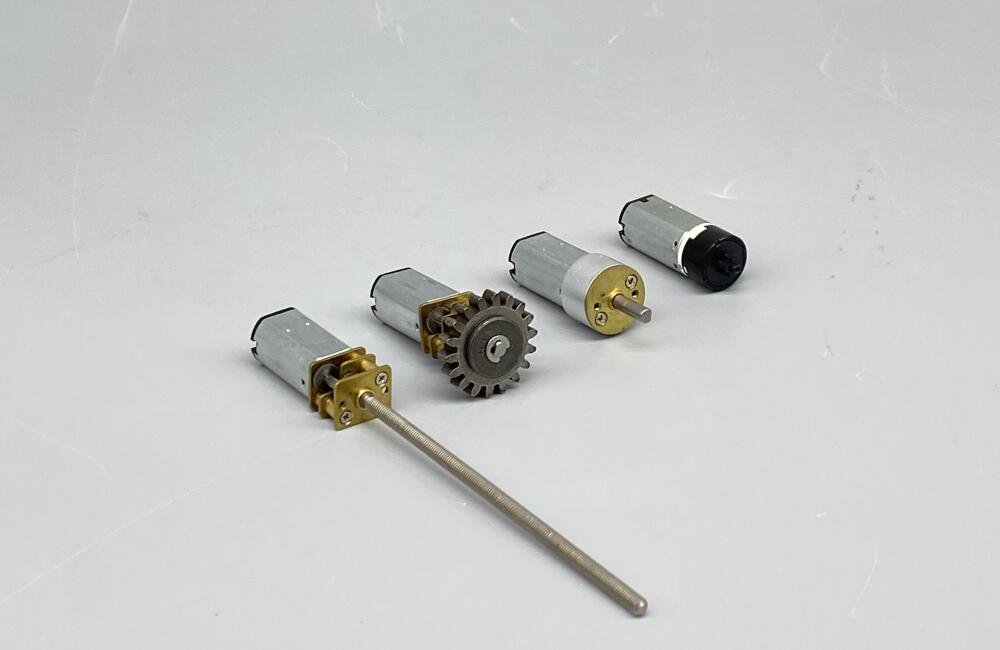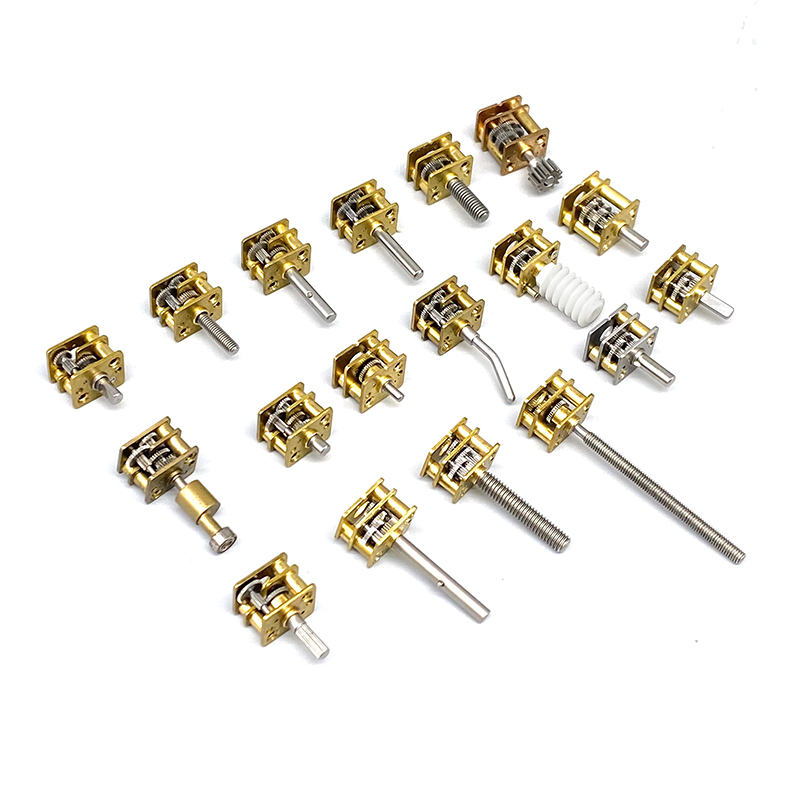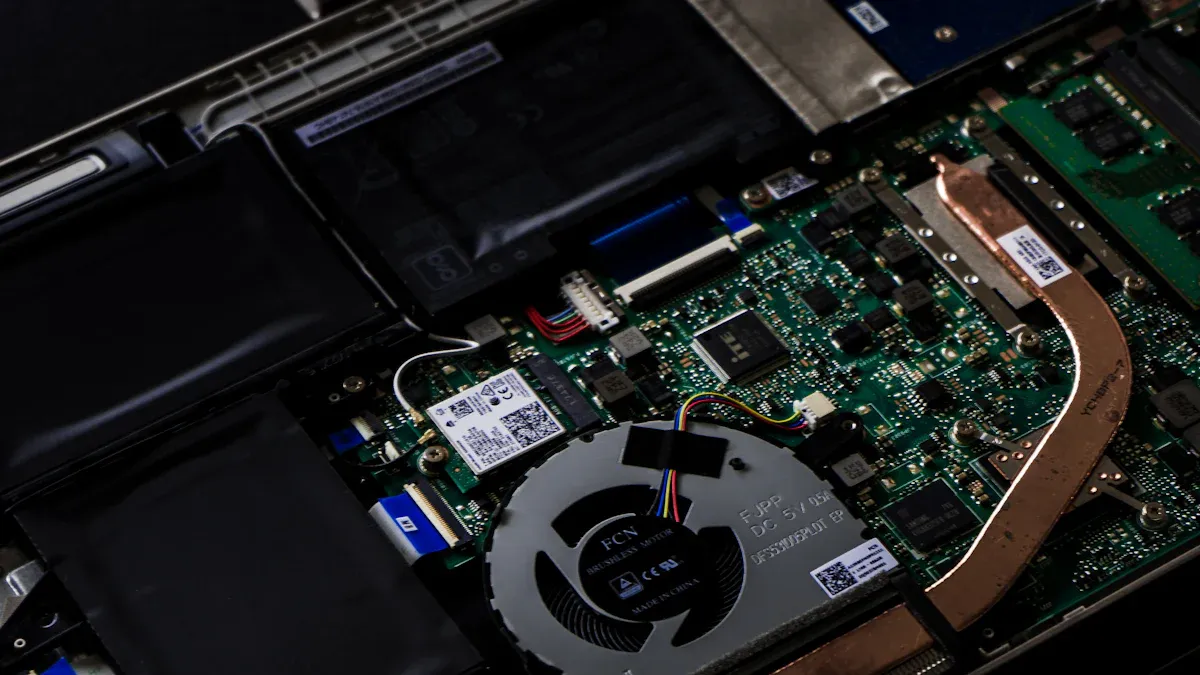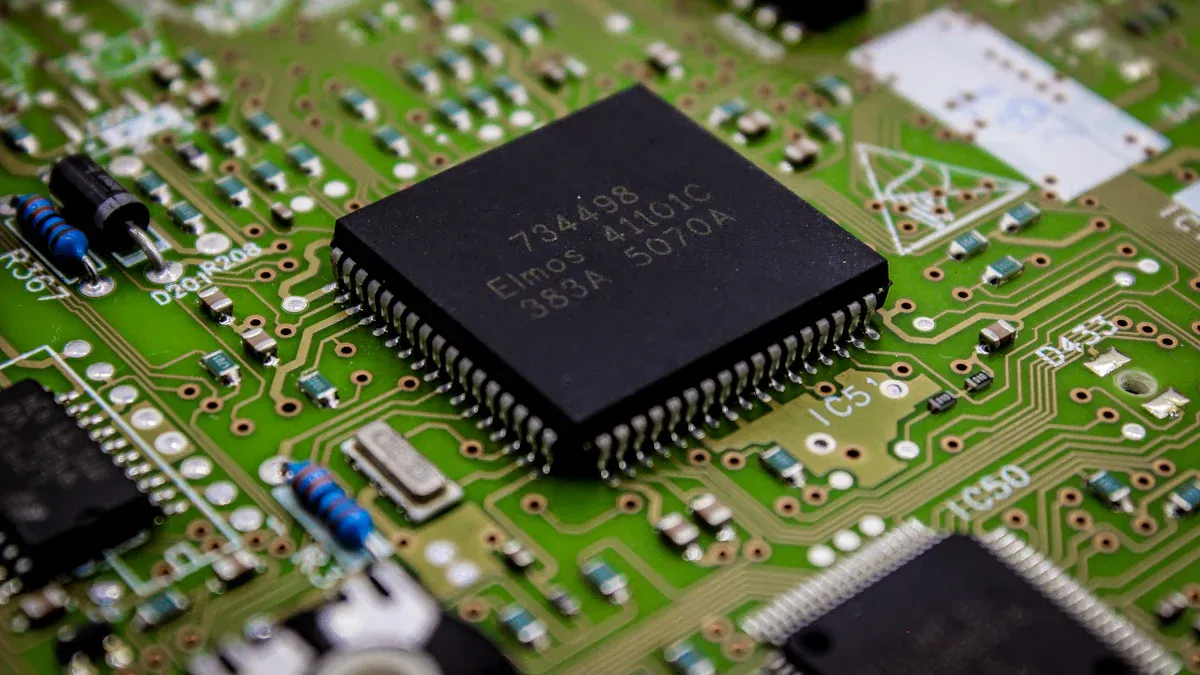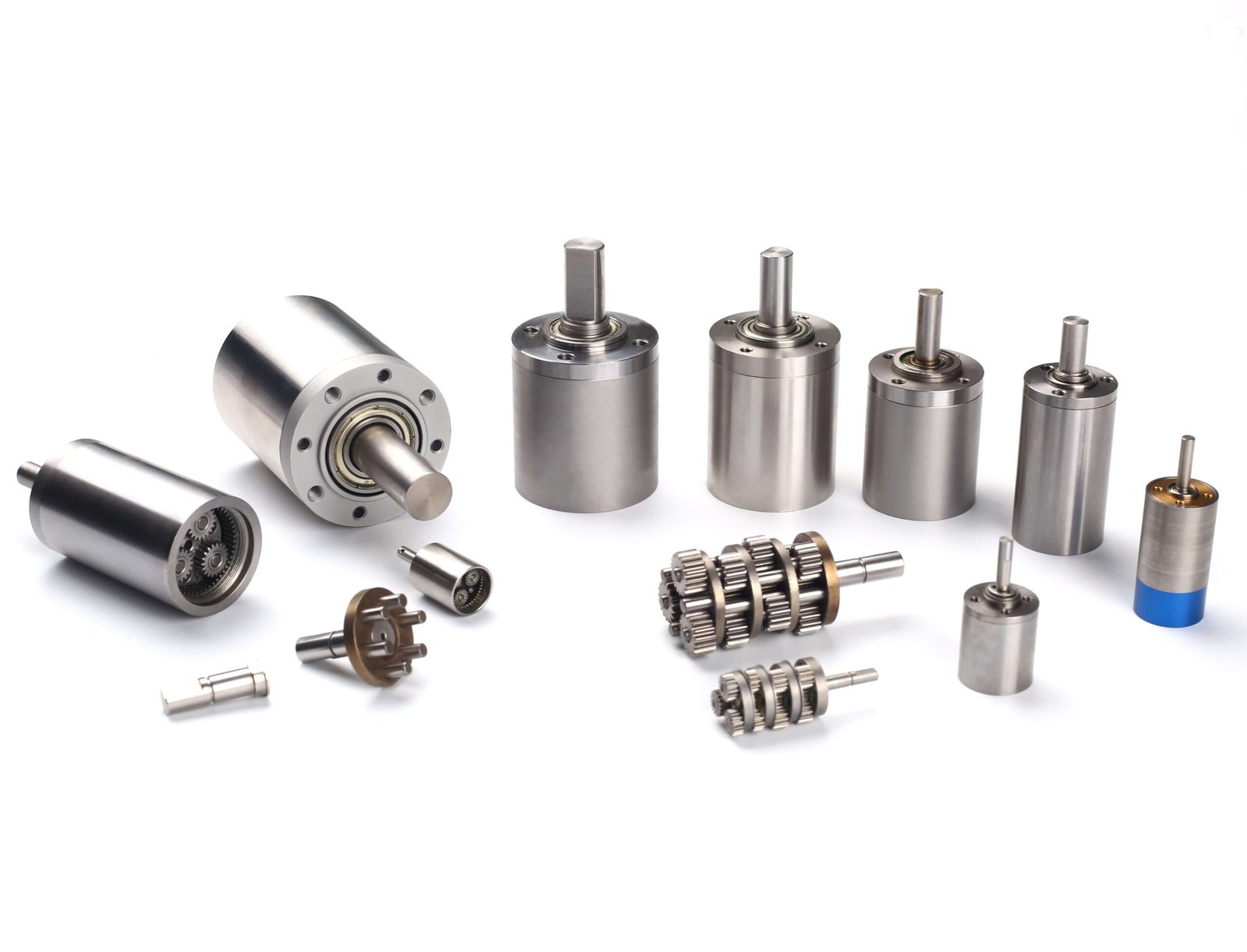When you select a 5V DC motor, understanding dc motor specifications helps you avoid common issues and ensures your project works smoothly. You may face challenges such as:
Poor commutator brush connection, which can cause motor failure.
Weak coil connection, often due to improper wire stripping.
High rotational friction, which can stop the motor from turning.
By knowing the right specs for INEED Spur Gear Motors and Micro DC Motors, you make better choices for electronics and robotics projects.
Key Takeaways
Understand torque, RPM, and power to choose the right 5V DC motor for your project.
Always match the motor’s voltage to your power source to avoid overheating and performance issues.
Balance speed and torque for optimal motor performance; increasing one often decreases the other.
Check the motor’s specifications, like torque and RPM, to ensure it meets your application’s needs.
Use efficient motors to save energy and extend the lifespan of your devices.
DC Motor Specifications: Key Factors for 5V DC Motors
What Are DC Motor Specifications
When you work with 5V DC motors, you need to understand dc motor specifications. These specifications tell you how a motor will perform in your project. You look at torque, RPM, and power requirements to decide if a motor fits your needs. Torque measures how much force the motor can deliver. RPM shows how fast the motor spins. Power combines both speed and force, helping you see how much work the motor can do.
Tip: Always check the motor’s voltage rating to match your power source and avoid performance issues.
Here is a quick overview of how these factors influence your choice:
Factor | Description |
|---|---|
Torque | Essential for moving heavy loads; calculated based on load weight and distance from the motor axis. |
RPM | Determines how fast the motor spins; higher RPMs may be needed for some applications like fans. |
Power | Depends on both speed and torque; usually peaks at a midpoint between maximum speed and stall point. |
Why 5V DC Motor Specs Matter
You need to know dc motor specifications because they help you avoid problems like motor stalling or overheating. If you choose a motor with the wrong torque, it may not move your load. If the RPM is too high or too low, your device may not work as expected. Power requirements show you how much energy your motor will use. This helps you pick the right battery or power supply.
Ensure the motor’s voltage matches your power source.
Consider the RPM needed for your application.
Check the rated torque to handle your load.
You see that speed and torque have an inverse relationship. As speed goes up, torque goes down. Power peaks between maximum speed and stall point. These details help you select the best motor for your project.
INEED Spur Gear Motors and Micro DC Motors Overview
INEED offers a wide range of 5V DC motors. You find Spur Gear Motors and Micro DC Motors designed for different tasks. Spur Gear Motors give you increased torque and precise speed control. Micro DC Motors provide high RPM and compact size for tight spaces.
Specification | Micro DC Motors | INEED Spur Gear Motors (Small Gear Motors) |
|---|---|---|
Torque | Low torque at low speeds | Increased torque due to gear mechanism |
Speed | High RPM | Reduced speed due to gear reduction |
Applications | Industrial automation, robotics, etc. | Versatile applications requiring torque control |
Control | Requires additional controllers | More precise speed control with gear ratios |
Size | Compact and efficient | Compact design with integrated power solutions |
Manufacturing Cost | Generally lower | Higher due to additional gear transmission |
You benefit from INEED’s focus on customization and quality. The company provides motors with stable performance, high efficiency, and long life. You can request custom electric performance and get support for large orders. INEED’s motors meet ISO and ROHS standards, giving you peace of mind about quality and safety.
Torque and RPM in 5V DC Motor Performance
Understanding Torque in D.C. Motors
You need to understand torque when you choose a d.c. motor for your project. Torque measures the force that causes an object to rotate. You see torque expressed in units like kg-cm or N-m. In most 5V d.c. motor applications, torque tells you how much load the motor can move. You find that the torque produced by the rotor is directly proportional to the current in the armature windings. The torque constant of the motor helps you predict performance.
The torque developed at the rotor equals the friction torque of the motor plus the load torque from external mechanical loading.
You want to know why torque matters. If you select a d.c. motor with low torque, it may not move your load. If you choose a motor with high torque, you get reliable movement even for heavier objects. You see that torque affects how well your device performs. You need to match the torque to your application for best results.
You often see these typical torque values for 5V d.c. motors in consumer electronics and robotics:
Stall Torque: 1.5-3.0 kg-cm (varies by model)
Smooth performance and moderate torque make these motors ideal for simple motion applications.
You get consistent results when you match the torque to your load.
You notice that speed and torque have an inverse relationship. When you increase speed, torque decreases. When you need more torque, you often reduce speed. You must balance speed and torque to achieve the desired outcome in your project.
RPM and Speed Control in 5V DC Motors
You need to understand rpm when you work with d.c. motors. RPM stands for revolutions per minute. It tells you how fast the motor shaft spins. You use rpm to control the speed of your device. You see that the relationship between voltage and rpm is crucial for speed control in 5V d.c. motors. When you apply a specific voltage, the rpm increases proportionally. This helps you achieve the speed you want in practical applications.
You want to optimize speed and torque for your project. You use techniques like PWM (Pulse Width Modulation) to control motor speed. You add feedback mechanisms such as encoders to improve precision. You notice that the torque produced by the motor is directly related to the current. You need to understand these relationships to optimize efficiency.
You see that speed and torque interact in every application. If you need high speed, you may sacrifice torque. If you need high torque, you may reduce speed. You must decide which factor is more important for your project.
INEED Product Features: Torque and RPM Range
You find that INEED Spur Gear Motors and Micro DC Motors offer a wide range of torque and rpm specifications. You choose the right d.c. motor by matching speed and torque to your application.
Motor Type | Typical Torque Range | RPM Range | Application Suitability |
|---|---|---|---|
0.1g-cm to 200kg-cm | 0.5rpm to 5000rpm | High torque, precise speed control | |
Micro DC Motors | Low to moderate | High rpm | Compact, efficient, simple motion |
You select Spur Gear Motors when you need high torque and precise speed control. You use these motors in robotics, automation, and medical devices. You choose Micro DC Motors for applications that need high rpm and compact size. You use these motors in consumer electronics and small devices.
You benefit from INEED’s customization options. You request specific torque and rpm values to match your needs. You get motors with stable performance and high efficiency. You see that INEED motors deliver reliable speed and torque for a wide range of projects.
You need to balance speed and torque for every application. You achieve optimal performance by choosing the right d.c. motor from INEED’s product range. You ensure your device works smoothly and efficiently.
Power Requirements for 5V DC Motors
Calculating Power for D.C. Motor Applications
You need to understand why power matters when you select a 5V DC motor. Power tells you how much work your motor can do over time. You calculate power using the formula:
Power (Watts) = Voltage (Volts) × Current (Amps)
You use this formula to estimate the energy your motor will consume. When you know the voltage requirements and the current draw, you can predict how your motor will perform under load. You also consider torque calculations because the mechanical output depends on both torque and speed. If you want your motor to move a load efficiently, you must ensure the power supply can deliver enough energy.
You see that different applications need different amounts of power. In robotics, you use 5V DC motors for small movements and precise control. In consumer electronics, you rely on these motors for light loads, such as small fans or vibration motors. You need a stable power supply to avoid stalling or reduced speed.
Tip: Always check the datasheet for voltage requirements and current ratings before connecting your motor.
Here are some typical power requirements for 5V DC motors in common applications:
You need a stable power supply to handle loads effectively.
Insufficient current can lead to stalling or reduced speed.
Motor efficiency impacts how well electrical power converts to mechanical power, affecting torque generation.
In robotics, you use 5V DC motors for both static and dynamic loads.
In consumer electronics, you use these motors for light loads like small fans and vibration motors.
Matching Power Supply to INEED Motors
You must match your power supply to the specifications of your INEED 5V DC motor. If you mismatch the supply, you risk damaging your motor or reducing its lifespan. You need to check both voltage requirements and current ratings. You select a power supply that matches the motor’s voltage and provides enough current for both startup and running conditions.
You should use power supplies with protection circuits. These circuits prevent problems like overcharging and short circuits. You need to be careful with voltage levels. Too high voltage causes overheating. Too low voltage leads to poor performance. You also consider the starting current, which is often higher than the running current.
Note: Always choose a power supply that can handle the highest expected current draw, especially during motor startup.
If you mismatch the power supply and motor requirements, you face several risks:
Overvoltage faults can damage the motor.
Under-voltage issues can cause the motor to stall.
Instability in the control loop of the power supply may occur.
Insufficient current supply can result in overheating and damage, especially under high loads or regenerative braking.
You avoid these problems by carefully matching your power supply to your motor’s specifications. You protect your investment and ensure reliable operation.
Efficiency and Reliability in INEED Micro DC Motors
You want your motor to run efficiently and reliably. Efficiency measures how well your motor converts electrical power into mechanical power. High efficiency means less energy wasted as heat. You save on battery life and reduce operating costs.
INEED Micro DC Motors achieve high efficiency compared to industry benchmarks. You see the difference in the table below:
Motor Type | Efficiency (%) |
|---|---|
Brushed DC Motors | 75–80 |
Brushless DC Motors | 85–90 |
AC Induction Motors | 90–93 |
Synchronous Motors | Up to 99 |
You benefit from brushless DC motors because they offer 85–90% efficiency. You get longer lifespan and lower maintenance. Brushed DC motors provide 75–80% efficiency, which suits many basic applications. INEED designs its motors to meet strict industry standards, including ISO 9001, REACH, and RoHS compliance. You get reliable performance and environmental safety.
You choose INEED Micro DC Motors for their commitment to quality. You receive motors that pass rigorous testing for lifetime, vibration, and performance. You trust INEED to deliver motors that work efficiently in your devices, whether you build robots, medical equipment, or consumer electronics.
Tip: Efficient motors help you reduce energy consumption and extend device life.
You see why power requirements matter. You ensure your motor receives the right voltage and current. You match your power supply to your motor’s needs. You select efficient and reliable motors from INEED to achieve the best results in your projects.
Selecting the Right 5V DC Motor: Torque, RPM, and Power
How Specifications Interact in D.C. Motor Selection
When you select a 5v dc motor, you need to understand how torque, speed, and power work together. Torque gives you the force to move objects. Speed tells you how fast the motor turns. Power shows you how much work the motor can do. If you want your project to run smoothly, you must balance these three factors. For example, if you increase speed, you often lose torque. If you need more torque, you may have to lower speed. Power depends on both torque and speed, so you must check all three when choosing a motor.
You see different needs in robotics and consumer electronics. Robotics often require precise control over speed and torque. Consumer electronics may need motors that run at a steady speed with less torque. The table below helps you compare the most important factors:
Factor | Description |
|---|---|
Nominal Voltage | Make sure your controller matches the motor’s voltage to avoid problems. |
Continuous Current | Pick a controller that supplies enough current for your motor. |
Control Method | Choose a control method that works with your microcontroller, such as PWM or I2C. |
Single vs. Dual | Decide if you need to control one or two motors, based on your power needs. |
INEED Quick Reference Guide for Motor Choice
You want to choose the right 5v dc motor for your application. Follow this step-by-step guide to make the best decision:
Determine Voltage Requirements: Check if your system needs a 5v dc motor. This ensures compatibility.
Decide Speed Requirements: Calculate the speed your project needs. Fast-moving devices need higher speed.
Figure Out Torque Requirements: Make sure the motor can handle the torque needed for your load.
Size vs. Performance Considerations: Confirm the motor fits your device and delivers the required speed and torque.
Establish Your Duty Cycle: Decide how often and how long the motor will run. This affects lifespan and efficiency.
Tip: Always match your motor’s speed and torque to your application for reliable performance.
Application Examples: Electric Screwdrivers and More
You find many uses for a 5v dc motor. Electric screwdrivers need precise torque and controlled speed for assembly tasks. DC brushless screwdrivers use lower voltage, making them safer. They stop automatically when the right torque is reached, protecting your product and screw head. These motors last longer and need less maintenance. You see no carbon dust, which keeps clean rooms safe.
INEED’s DC gear motor solution improves electric screwdriver performance. You get precise control over speed and torque, which boosts efficiency. The brushless DC gear motor runs quietly and lasts longer. High torque at low speed prevents damage from overdrive. You achieve better results in screw-tightening tasks.
You also use 5v dc motors in robotics, medical devices, and consumer electronics. Each application needs a careful balance of speed and torque. You choose INEED motors for their reliability and customization options. You ensure your project works as planned by matching specifications to your needs.
You need to understand DC motor specifications to achieve optimal motor performance and efficiency. When you match torque, rpm, and power curve to your application, you ensure smooth operation and long motor life. INEED Spur Gear Motors and Micro DC Motors deliver reliable results in robotics, automation, medical devices, automotive, and consumer electronics. You benefit from energy savings, longevity, and precise control. For expert advice and access to free samples, explore INEED’s website, where you find resources and support for your next project.
FAQ
Why does voltage matter when choosing a 5V DC motor?
You need to match voltage to your motor’s rating. Using the wrong voltage can cause overheating or weak performance. Correct voltage ensures your motor runs efficiently and lasts longer.
Why do you see different voltage ratings like 5V, 12V, or 24V in DC motors?
Manufacturers design motors for specific voltage levels. You choose voltage based on your application’s power supply and required performance. Higher voltage often means more speed or torque.
Why should you avoid running a 5V DC motor at 12V?
You risk damaging the motor if you use 12V instead of 5V. Excess voltage increases heat and wear. You may shorten the motor’s life or cause failure.
Why do electric screwdrivers use motors with specific voltage ratings?
You need precise control for tasks like assembly. The right voltage lets you achieve stable speed and torque. Using 12V or 5V motors depends on the tool’s design and safety needs.
Why does voltage affect the efficiency of INEED Micro DC Motors?
You get better efficiency when you use the recommended voltage. If you use 12V on a 5V motor, you waste energy as heat. Correct voltage helps you save power and extend device life.
